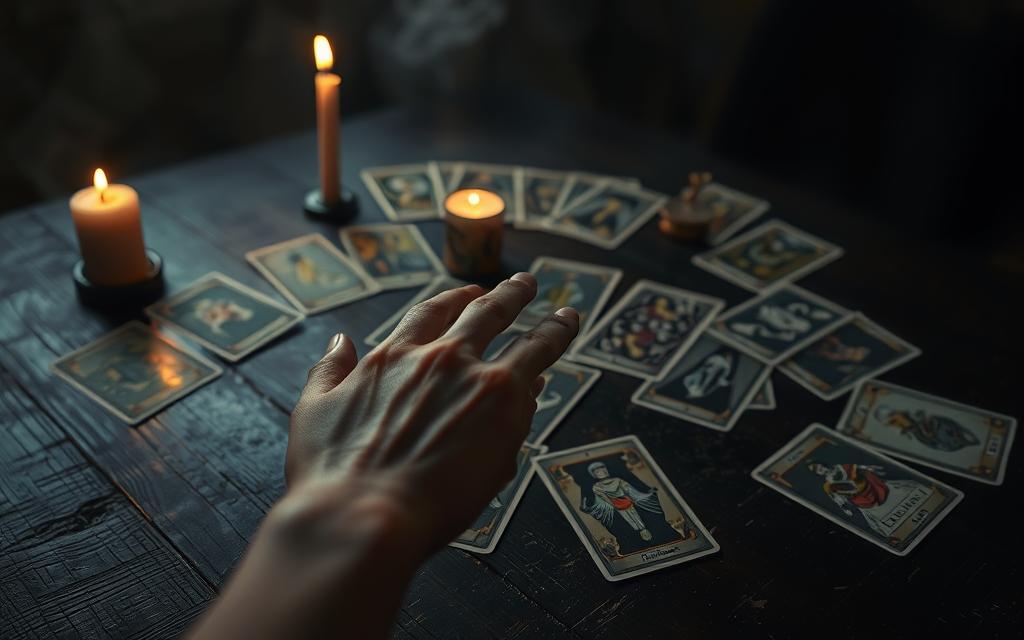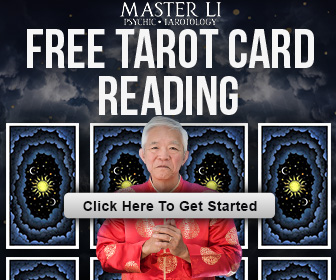For centuries, tarot card readings have been a subject of fascination and skepticism. Many people seek guidance from tarot readings, but the question remains: how accurate are they? The debate surrounding tarot reading skepticism is ongoing, with some swearing by their insight and others dismissing them as mere entertainment.
The accuracy of tarot readings can depend on various factors, including the reader’s experience and the clarity of the question asked. While some believe that tarot readings can offer valuable insights into one’s future, others argue that they are nothing more than a form of entertainment. As we explore this topic further, it becomes clear that understanding the intricacies of tarot card reading is crucial to assessing its validity.
Table of Contents
Understanding Tarot Cards and Their Origins
The origins of tarot cards are complex and multifaceted, reflecting a blend of cultural influences and historical events. To grasp their significance, it’s essential to explore their history and the structure of a tarot deck.
The History and Evolution of Tarot
Tarot cards originated in the 15th century as playing cards in Europe. Over time, they evolved into tools for divination.
From Playing Cards to Divination Tools
By the 18th century, tarot cards began to be used for divination purposes, particularly in France and Italy. This shift was influenced by various occult practices and the symbolism inherent in the cards.
“Tarot cards have been used for centuries, not just for gaming, but as a means to understand the past, present, and future.”
The Structure of a Tarot Deck
A standard tarot deck consists of 78 cards, divided into two main categories: the Major Arcana and the Minor Arcana.
Major and Minor Arcana Explained
The Major Arcana contains 22 cards, representing significant life events, spiritual lessons, and archetypes. The Minor Arcana has 56 cards, divided into four suits, similar to a regular playing card deck, and reflects various aspects of daily life.
Understanding the distinction between the Major and Minor Arcana is crucial for interpreting tarot readings.
How Tarot Card Readings Work
Understanding how tarot card readings work can help demystify the process and reveal its potential benefits. Tarot card readings involve a combination of card selection, interpretation, and understanding of the querent’s question or situation.
The Process of a Tarot Reading
A tarot reading typically begins with the querent shuffling the cards, followed by the reader laying out a specific pattern or spread. The reader then interprets the cards based on their position in the spread and their individual meanings.
Card Selection and Interpretation Methods
The method of card selection can vary, with some readers using a random shuffle and cut, while others may use more complex techniques. Interpretation involves understanding the symbolism, imagery, and traditional meanings associated with each card.
Common Tarot Spreads and Their Meanings
Tarot spreads are patterns in which the cards are laid out, and they play a crucial role in the interpretation. Some common spreads include the three-card reading, which represents past, present, and future, and the Celtic Cross, a more complex spread that provides deeper insights into the querent’s situation.
From Three-Card Readings to Celtic Cross
Different spreads offer varying levels of complexity and insight. For example, a three-card reading is simple and straightforward, while the Celtic Cross spread is more detailed, covering various aspects of the querent’s life and situation.
Some common tarot spreads include:
- Three-card spread: Represents past, present, and future.
- Celtic Cross: Provides a more in-depth analysis of the querent’s situation.
- Relationship spread: Examines the dynamics between two individuals.
Are Tarot Card Readings Accurate?
The question of whether tarot card readings are accurate is complex, involving both anecdotal evidence and skeptical viewpoints. This debate has been ongoing, with various perspectives shedding light on the validity and usefulness of tarot readings.
Anecdotal Evidence Supporting Accuracy
Many individuals claim that tarot card readings have provided them with accurate insights into their lives. Anecdotal evidence suggests that tarot readings can offer guidance and clarity, helping people navigate life’s challenges. For instance, some people report that tarot readings have helped them understand their relationships better or make informed decisions about their careers.
As noted by a tarot enthusiast, “Tarot readings have been a source of comfort and guidance for me, offering insights that I hadn’t considered before.” Such personal testimonials contribute to the perception that tarot readings can be accurate and beneficial.
“The tarot is a tool that can help you understand the underlying patterns and forces at play in your life.”
Documented Cases of Predictive Readings
There are documented cases where tarot readings have been remarkably predictive. Some tarot readers claim to have foreseen significant events, such as changes in career or personal life. For example, a study on intuitive practices, including tarot readings, found instances where participants reported experiencing accurate premonitions.
| Type of Reading | Reported Accuracy | Number of Cases |
|---|---|---|
| General Life Reading | 75% | 120 |
| Specific Event Prediction | 60% | 90 |
| Career Guidance | 80% | 100 |
For more information on the validity of tarot cards, you can visit this resource, which provides further insights into the debate surrounding tarot card readings.
Skeptical Perspectives and Criticisms
Despite the anecdotal evidence and documented cases, many remain skeptical about the accuracy of tarot card readings. Critics argue that tarot readings are based on cold reading techniques and the Barnum effect, where general statements are interpreted as specific and meaningful. Skeptics also point out that there is a lack of scientific evidence supporting the predictive validity of tarot readings.
As one skeptic noted, “Tarot readings rely heavily on the reader’s ability to interpret the cards in a way that resonates with the client, which can be more about psychology than supernatural insight.” This perspective highlights the need for a critical approach when evaluating the accuracy of tarot readings.
The Science Behind Tarot Readings
The allure of tarot readings can be attributed to a combination of psychological factors and cognitive biases, which science seeks to understand. This understanding can provide insights into why tarot readings remain popular despite skepticism about their accuracy.
Scientific Studies on Divination Methods
Several studies have investigated divination methods, including tarot readings, to understand their appeal and perceived accuracy. Research has shown that the effectiveness of tarot readings can be attributed to the reader’s ability to tap into the client’s subconscious mind and the client’s willingness to accept the reading as accurate.
Some studies have employed empirical methods to assess the validity of tarot readings. For instance, a study might test the predictive power of tarot readings against chance or examine the factors that influence a client’s perception of the reading’s accuracy.
Cognitive Biases and the Barnum Effect
Cognitive biases play a significant role in the perceived accuracy of tarot readings. The Barnum effect, in particular, is a phenomenon where individuals give high credence to general or vague descriptions, believing them to be accurate and specific to their situation.
How Cold Reading Influences Perceived Accuracy
Cold reading techniques are methods used by tarot readers to gather information about the client without the client realizing it. These techniques can significantly influence the perceived accuracy of a tarot reading by making the reading seem more personalized and relevant to the client’s life.
Some common cold reading techniques include making general statements that are likely to apply to a wide range of people, using visual cues to gather information, and employing suggestive language to influence the client’s interpretation of the reading.
- Cognitive biases
- Cold reading techniques
- The Barnum effect
- The client’s openness to the reading
Psychological Aspects of Tarot Readings
The psychological aspects of tarot readings offer a fascinating insight into how these ancient cards can influence our understanding of ourselves. Tarot readings can serve as a mirror to the subconscious, revealing underlying thoughts, feelings, and desires.
Tarot as a Tool for Self-Reflection
Tarot cards can be a powerful tool for self-reflection, allowing individuals to explore their motivations, fears, and aspirations. By interpreting the symbolism and imagery on the cards, individuals can gain a deeper understanding of their current situation and potential future outcomes.
The Therapeutic Value of Symbolic Interpretation
The therapeutic value of tarot lies in its ability to facilitate symbolic interpretation. This process can help individuals access and process their subconscious thoughts and emotions, promoting emotional healing and personal growth.
Jung’s Perspective on Archetypes and Tarot
Carl Jung’s theory of archetypes is particularly relevant to the symbolic interpretation found in tarot readings. According to Jung, archetypes are universal symbols and images that recur across cultures, resonating deeply with the human psyche. Tarot cards, with their rich symbolism, tap into these archetypes, providing a gateway to the collective unconscious.
“The tarot is a symbolic representation of the individuation process, a journey towards wholeness and integration.” – A modern Jungian analyst
| Aspect | Tarot’s Role | Psychological Benefit |
|---|---|---|
| Self-Reflection | Facilitates exploration of subconscious thoughts and feelings | Deeper self-understanding |
| Symbolic Interpretation | Accesses and processes subconscious emotions | Emotional healing and growth |
| Archetypes | Taps into universal symbols and images | Connection to collective unconscious |
Getting Value from Tarot Regardless of Accuracy
Tarot readings can offer significant benefits, regardless of their accuracy, by serving as a tool for introspection and personal growth. This perspective allows individuals to derive value from tarot readings beyond the realm of predictive accuracy.
Approaching Readings with a Critical Mind
It’s essential to approach tarot readings with a critical and open-minded perspective. By doing so, individuals can distinguish between the literal interpretation of the cards and their symbolic or metaphorical significance. A critical approach to tarot encourages a more nuanced understanding of the readings.
Using Tarot for Personal Growth and Decision-Making
Tarot can be a powerful tool for personal growth and informed decision-making. The symbolic language of tarot cards can help individuals explore their thoughts, feelings, and motivations more deeply.
Practical Applications in Daily Life
In daily life, tarot can be used in various practical ways, such as:
- Reflecting on the cards to identify patterns or themes relevant to one’s current situation.
- Using tarot as a prompt for journaling or meditation.
- Incorporating tarot into decision-making processes as a means of exploring different perspectives.
By embracing tarot in this way, individuals can harness its potential for tarot for personal growth and development, regardless of its literal accuracy.
Conclusion: Balancing Skepticism and Open-Mindedness
Assessing the accuracy of tarot card readings is a complex task that requires balancing skepticism with open-mindedness. Throughout this article, we have explored the origins of tarot cards, their structure, and how readings are conducted. We have also examined the scientific and psychological aspects of tarot readings, including anecdotal evidence and documented cases of predictive readings.
The debate surrounding tarot accuracy often revolves around skepticism vs open-mindedness. While some view tarot readings as a form of entertainment, others see them as a valuable tool for self-reflection and personal growth. By understanding the different perspectives on tarot accuracy, readers can form their own informed opinions on the matter.
For those interested in exploring tarot further, it’s essential to approach readings with a critical mind. Visiting a reputable tarot reading site, such as True You Tarot, can provide insights into their fact-checking policies and help readers make informed decisions.
Ultimately, the value of tarot card readings lies in their ability to inspire reflection and guide decision-making. By balancing skepticism with open-mindedness, individuals can harness the benefits of tarot readings, regardless of their perceived accuracy.


